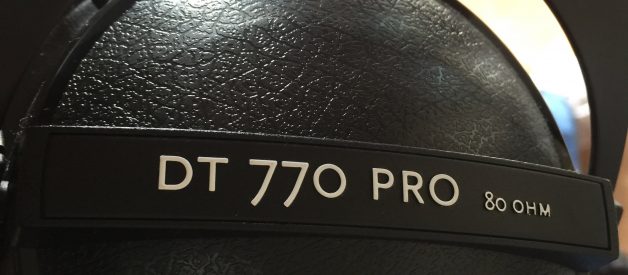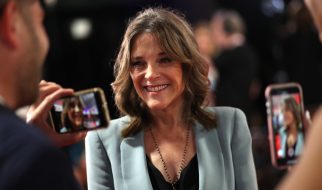It?s Friday, and it?s time for the headphone showdown!
I?m crazy!
I?ve purchased three different versions of the DT770 Pros, and I still own two of them. My first pair was the DT770 Pro 80 Ohm Limited Edition, which I reviewed here.
Next I got the 250Ohm DT770s, because I wanted something I could really test my desktop amp out with. They?re also great, and a little bit more inclined to mixing work than the 80 Ohm version.
I gave my limited edition pair away to a friend, and almost immediately missed them. With my portable amp no longer working on my MacBook, I decided that was the perfect excuse to get the non-limited edition 80 Ohm DT770s on sale from Amazon, which I?m wearing right this very moment.
Both of these headphones hover around the $170 mark. Sometimes they go down into the $150 range, which is a phenomenal, almost-impossible-to-beat value, if you like speed and soundstage and fun bowling seat plastic.
Bonus Mini Showdown: 80 Ohm Limited Edition vs Regular 80 Ohm
Are there any differences between the LE 80 Ohm and regular 80 Ohm DT 770s? Kind of. The pads on the Limited Edition version are black! The velour seems a little bit less soft on those pads too, which might contribute to minor differences in sound signature and isolation. But I haven?t noticed any.
The sides of the LE version say ?Limited Edition? on them. The Limited Edition version goes on sale sometimes, but it usually costs more. It was originally produced as an Amazon Prime Day exclusive.
Beyerdynamic sells the black pads separately if you want to slap them on the regular version, or need replacements for your LE.
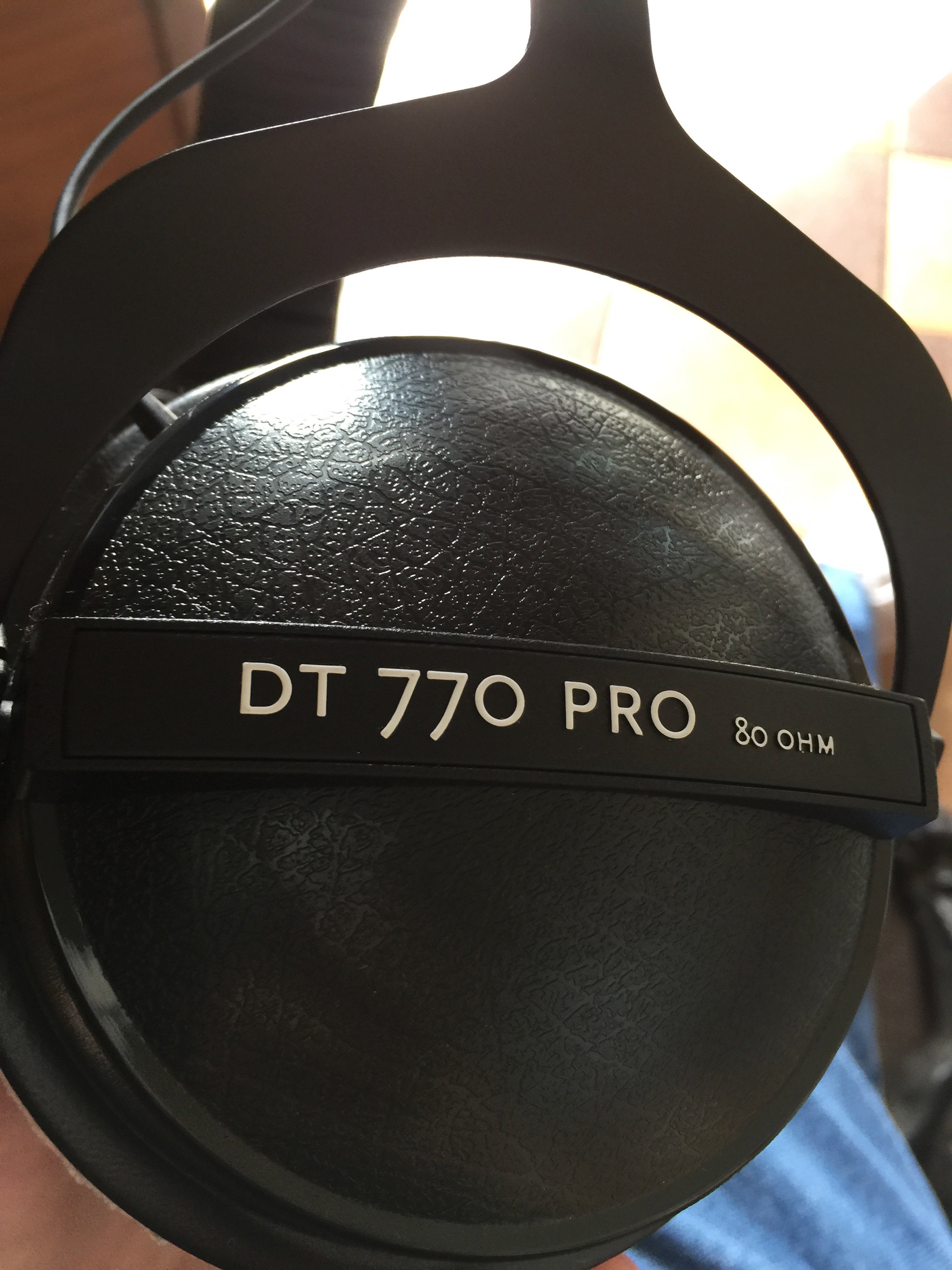 The bowling seat/instrument case plastic used in the cups here is my favorite plastic in headphones. As someone born in the early 80?s, it has a tremendously satisfying and nostalgic feel to it.
The bowling seat/instrument case plastic used in the cups here is my favorite plastic in headphones. As someone born in the early 80?s, it has a tremendously satisfying and nostalgic feel to it.
Sound Quality
Each DT770 Pro targets a different use-case. The 80 ohm version is more for monitoring and fun listening use, and the 250 ohm version is better for critical listening applications.
Often, the 80 ohm version is cited as having more bass?and this is true. It gets there by having slightly less harsh/less prominent treble. So, you can turn the volume up higher on the 80 Ohm version and reveal more bass as a result. A similar quality of bass is still present on the 250 Ohm model, but the highs are more harsh and strident. This is good for studio/mixing work, and not as enjoyable for home listening.
Both headphones are among the fastest(most-detailed) headphones on the market, something Beyerdynamic proudly touts in their marketing, and something that measurements back up. I don?t do headphone measurements, but the speed and detail are real and profound. Particularly for a closed-back dynamic model!
Both pairs have a slightly recessed midrange, but I wouldn?t go as far as others and call them aggressively v-shaped.
I love the sound of the DT770s. The 80 ohm version is a little better suited to home listening, and the 250 ohm version is a bit better for detailed listening work. You can?t go wrong with either one.
And soundstage! Oh my god, soundstage. These are the widest-sounding closed-back headphones on the market today. If you are way into soundstage, and want something isolating, get these into your life yesterday!
Are they the most neutral headphones on the market? No. Are they the bassiest or the brightest? No. But they resolve detail like no one else, and once you adjust to their signature, you might have a hard time using anything else.
Winner: 80 Ohm for fun listening, 250 Ohm for critical listening. They both have one of my favorite signatures and unmatched speed in dynamic headphones, especially at this price.
 As you can see here, the 250 Ohm version says 250 Ohms on the side, and has a coiled cable. The rest of the build is identical.
As you can see here, the 250 Ohm version says 250 Ohms on the side, and has a coiled cable. The rest of the build is identical.
Comfort
The DT770s are among the most comfy studio-style headphones in existence. Beyerdynamic completely nails ear pad and headband comfort. They?re just a bit too clampy and noticeable on the head to intrude into the very top tier, alongside the likes of the Bose QC35, but they?re still perfect for longer sessions. The velour pads are surprisingly isolating thanks to foam that?s a little denser than average, and the cloth covering means your ears won?t get as swampy as with leatherette.
I don?t think there?s any real way to improve the comfort here. The ear cups provide ample room for your ears, and my ears don?t touch anything inside. The foam at the back of the cup is really soft, so if they do bump your ears they shouldn?t cause annoyances.
I have to wear these adjusted almost to full size, but I have a large head. The steel headband is quite flexible, and the ear cup forks rotate a little to allow for a better fit. Also, the circular ear pad design means you can wear these along any part of the top of your head without worrying about throwing off the driver orientation.
Winner: Tie.
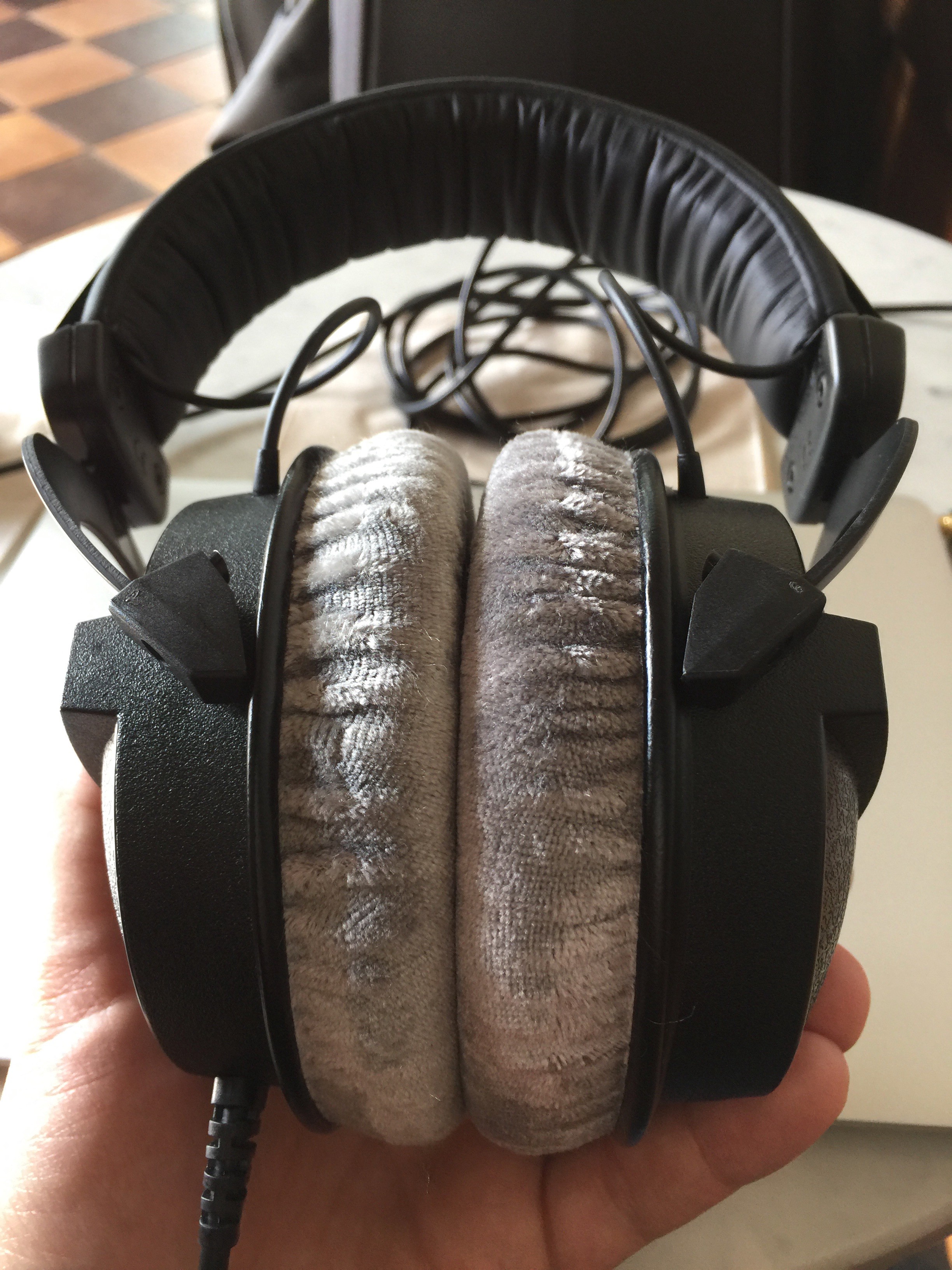 Look at these pads!!! Don?t they just scream comfort at you right off your screen?
Look at these pads!!! Don?t they just scream comfort at you right off your screen?
Build/Design
The DT770s have a design with roots in the 1980?s. It?s so not going to be for everyone. There?s nothing particularly stylish or modern about it.
And yet I love it.
It?s just a basic steel headband with aluminum forks and strong plastic cups. The headband pad is easily removable with snaps. The ear pads are easily removable too. They don?t stick out very far from your head, which helps with headband comfort. The more of the headband pad that touches your head, the better, and here I get complete contact.
Build is tank-like and industrial, without feeling heavy. Every pair of DT770 Pros is built by hand in Germany from German-made parts, and you can tell. Every single aspect of the design and build is targeted at durability over style. And I love them for this.
The only complaint I could level at design is that the cable isn?t removable.
The 80 Ohm version has a 10-foot straight cable. The 250 Ohm version has a 10-f0ot coiled cable. The coiled cable is of slightly higher quality, but both use decent cabling. Neither one is friendly to walking around, but they both work great in a desk/studio environment. The coiled cable is a little more portable-friendly?although the 250 ohm version won?t always play nice with portable devices thanks to its resistance.
If you need style, foldability, or really like cheap plastic?these aren?t for you. If you want a truly pro product that won?t fall apart on you, has properly replaceable parts, and doesn?t cost a ton, these are a wonderful choice.
Winner: Tie. They have the same build/design outside of the cable.
Amplification
Both versions benefit from an amp, and will allow you to hear the differences a better amp can bring.
Both are a little less sensitive than the average pair, so if you love stupid loudness you?ll definitely want an amp.
I?ve successfully driven both pairs out of a MacBook and an iPhone, but the 80 Ohm version played more nicely with those devices.
Maybe get an amp if you want to use the 250 Ohm version.
Winner: DT770 Pro 80 Ohm version.
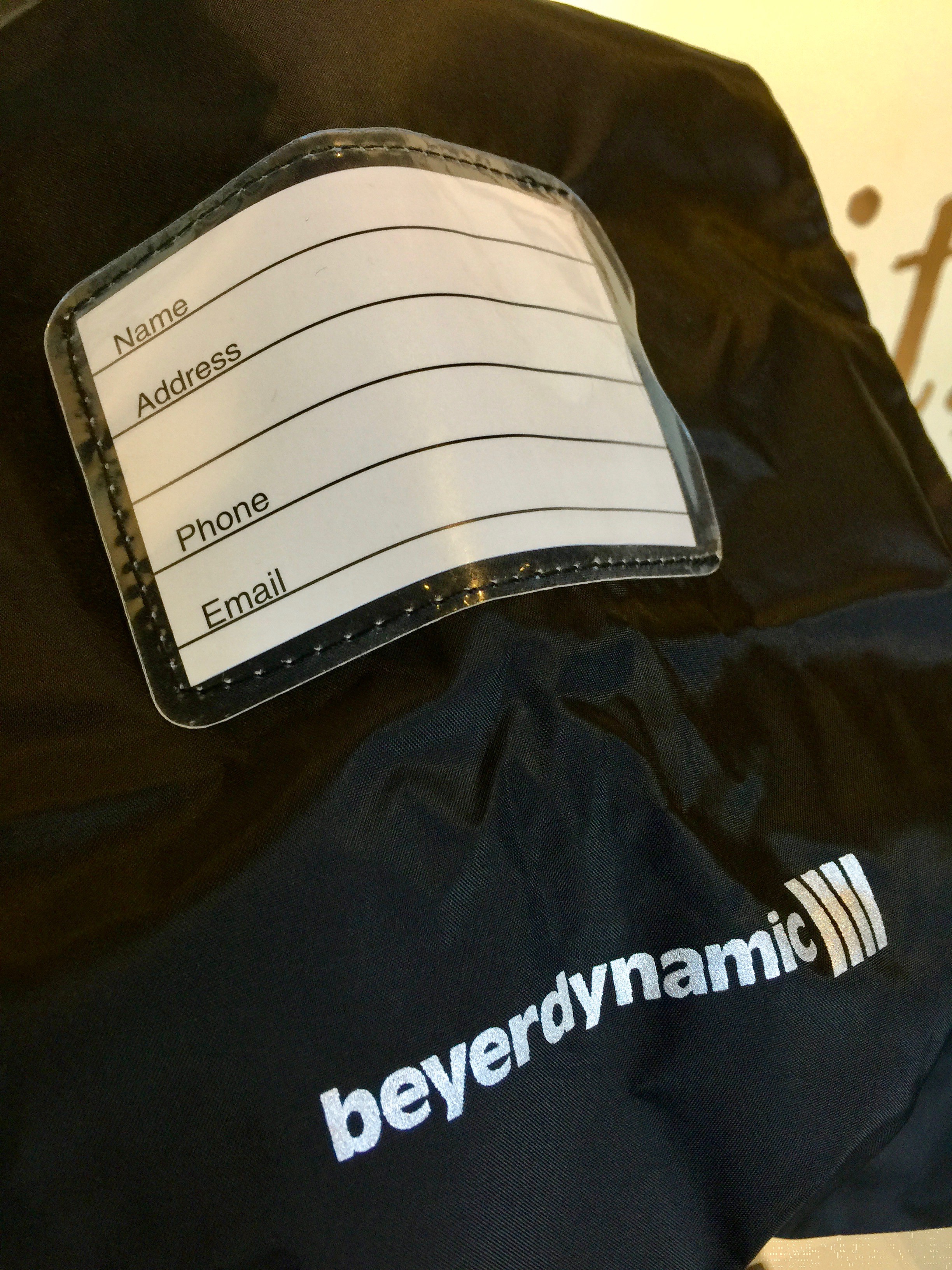 Here it is: The dumbest, most hilariously goofy bag in headphones. I love this stupid thing.
Here it is: The dumbest, most hilariously goofy bag in headphones. I love this stupid thing.
Features/Extras
Both versions come with a 6.3mm plug adapter, and a carrying bag. The bag is REALLY DUMB and GOOD. It?s made out of?like?poncho material? It?s like a weird vinyl material, with a shiny Beyerdynamic logo.
Oh and a luggage tag. Because you know. You need that for some reason.
The bag is really big and has plenty of room for the headphones and their cable. The bag is about a million times flimsier than the tank-like headphones, but it will keep dust away, so that?s something.
I?d wager most people will promptly hurl this bag in a closet, but I love the dumb charm of it and so I use mine all the time.
Winner: Tie. They both have the same features.
Overall Winner
The DT770 Pro 80 Ohm version gets the nod, thanks to its slightly less fatiguing sound and its lighter power demands on your gear. But if you want that coiled cable and you?ve got some serious sound hardware, stepping up to the 250 ohm is a great choice. I think the 80 ohm version is going to appeal more to the average consumer thanks to its slightly more prominent bass, but both of them have the same quick, detailed sound that?s unmatched at this price.
I love pretty much everything about these headphones, but I recognize that their style and their permanent cables will not be for everyone. But if you want to buy my not-so-secretly favorite headphone, this is it!

